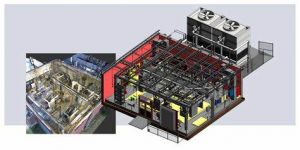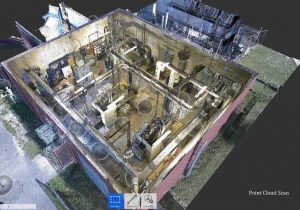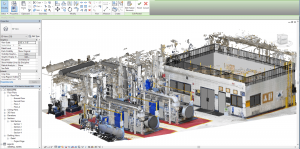WHAT IS SCAN TO BIM?
You must have come across the terms “Scan to BIM” or “Field to BIM” at some point if you work in the construction business. Alternately, you might have seen your building partners employing 3D laser scanners there. But what is Scan to BIM and how does it operate exactly?
-
What is Scan To BIM?
A laser scanner is used in the Scan to BIM process to create precise 3D images of the real data on a project. The scanned information is then incorporated into the 3D model to produce models that are exactly as created or to provide real-world information for design purposes. Scan to BIM is described by The B1M as follows:
“creating an accurate digital image of a physical location or site using a 3D laser scanner. Therefore, this representation can subsequently be applied to designing, progress evaluation, or option evaluation.”
1.1 The three important steps of the scanning process:
- Collect data by 3D laser scanner;
- Bring data to room design;
- Use it in the BIM process.
1.2 Why do contractors use 3D laser scanning?
In order to give accurate and up-to-date data value throughout the many stages of design and construction. 3D laser scanning enables contractors to quickly gather current conditions on a project site. The constructed models are then checked against existing structures, projects are tracked as they proceed, or missing design data is filled in. In order to document the new construction site for building owners. Many projects call for the contractor to present a point cloud as the final delivery.
So, you can quickly and efficiently generate a three-dimensional digital model of your building using scan to BIM.
1.3 Some advantages of Scan to BIM:
- Eliminate human error compared to traditional construction
- Data is collected over a shorter period of time
- Information can be shared faster
- Teams only need to visit the site once to collect data
-
How Scan to BIM works?
2.1 Scan: Collect data
Contractors can gather field data quickly and accurately thanks to contemporary 3D scanning technologies. An eye-safe laser that rotates quickly is within the tripod-mounted 3D laser scanner. X, Y, and Z coordinates are used to store the position in relation to the scanner when the laser beam strikes a solid surface. (Also known as “points”). A very accurate computer image made up of these millions of points is frequently referred to as a point cloud. So, following the point collection, the scanner takes color photos, which are utilized to colorize the scan and produce a 3D model that is accurate.
2.2 So what steps do you need to take to convert your scanned data to a BIM model?
7 Steps Scan to BIM:
1- Make sure you know your objectives before sending someone out to gather data for a Scan to BIM project. What purposes will the data serve? Then, you can more effectively gather scan data for a project.
2- Send someone to the project site to conduct a scan.
3- Setting up the scanner and entering certain settings, such as the scan density or the number of measurement points to be captured with each scan, are necessary before beginning the scan.
4- Only what the scanner can see can be recorded (line of sight). You need to conduct many scans from various areas in order to acquire a comprehensive presentation of your project.
5- With the aid of a USB drive or a cloud file sharing service like Trimble Connect, transfer data from the scanner to a computer.
6- Individual scans need to be subscribed to an aggregate point cloud before sharing scan data with others. Therefore, when registering, analyzing, and modeling data, use point cloud modeling software.
7- After registering for the point cloud, you may import the data into the modeling program and begin producing material for buildable models utilizing the point cloud data and your understanding of construction.
Contractors may produce constructible models right out of the box by utilizing the accuracy and speed of 3D laser scanning in the BIM process, which allows information to flow (nearly) effortlessly from the field to the office. instantly. So, Scan to BIM undoubtedly supports today’s contractors very effectively; it helps to “avoid errors, save costs, and save time” during the construction process.
Source: constructible.trimble.com
Contact us
If you have any questions about the content of this guide, or for help with your project in general, please contact us by email. We will be happy to assist.
Website: www.themetaplans.com
Email: [email protected]
Phone: +961 71 60 53 61
Powered By Sync



